Abstract
The sheep and goat pox viruses isolated in Kenya are not host specific as in the Middle East and India. The virus strains from one species are of a similar pathogenicity for the other, and the same virus appears to occur in the field outbreaks in mixed flocks. A silent infection with no skin lesions occurs in the field outbreaks. The virus grows well in lamb testis cell cultures, it does not haemadsorb nor haemagglutinate and is ether sensitive. Most strains could not readily be adapted to grow on the chorioallantoic membrane of embryonated eggs; one isolation only was made in this way. Staining of the virus inclusions showed that they were of DNA; the virus resembled that of lumpy skin disease in many characteristics. It was possible to cross-protect both species with virus of sheep or goat origin. A vaccine was made from tissue culture virus adsorped onto aluminium hydroxide gel and treated with formalin.
Full text
PDF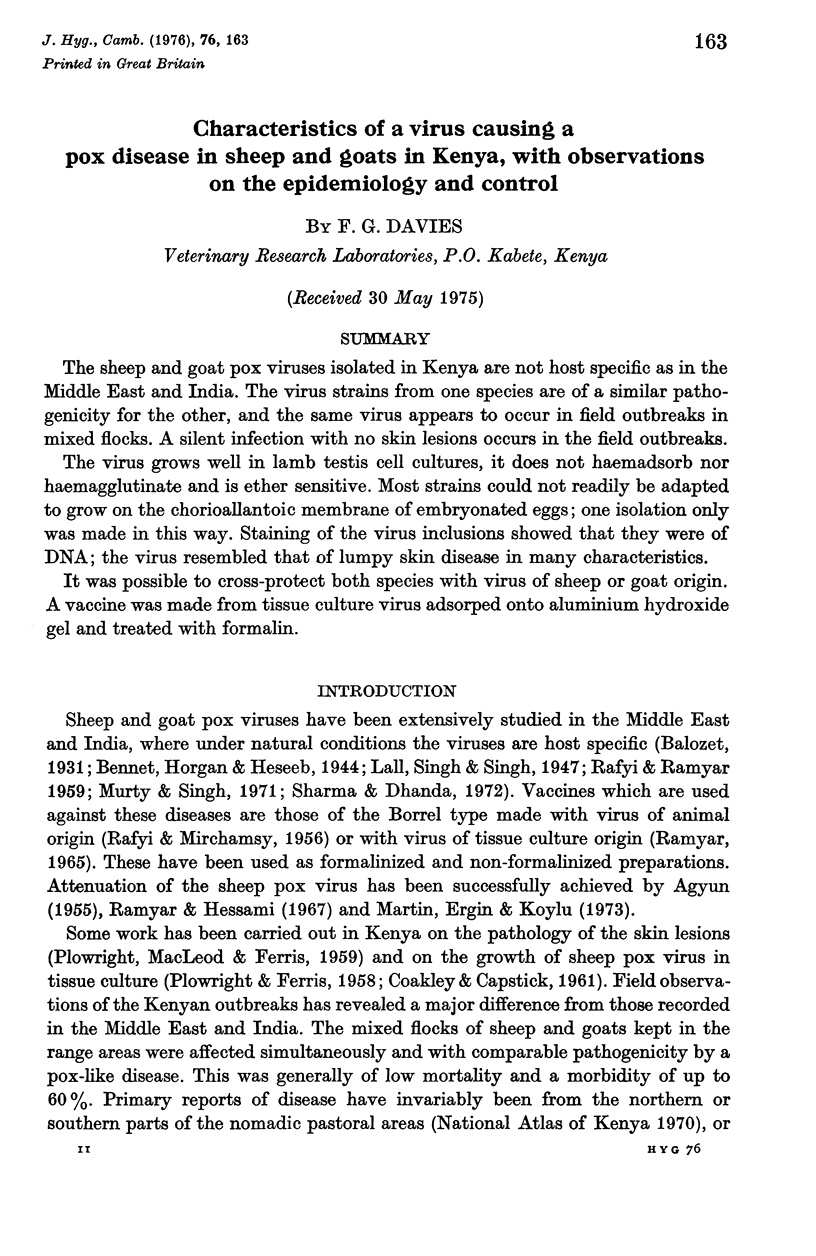
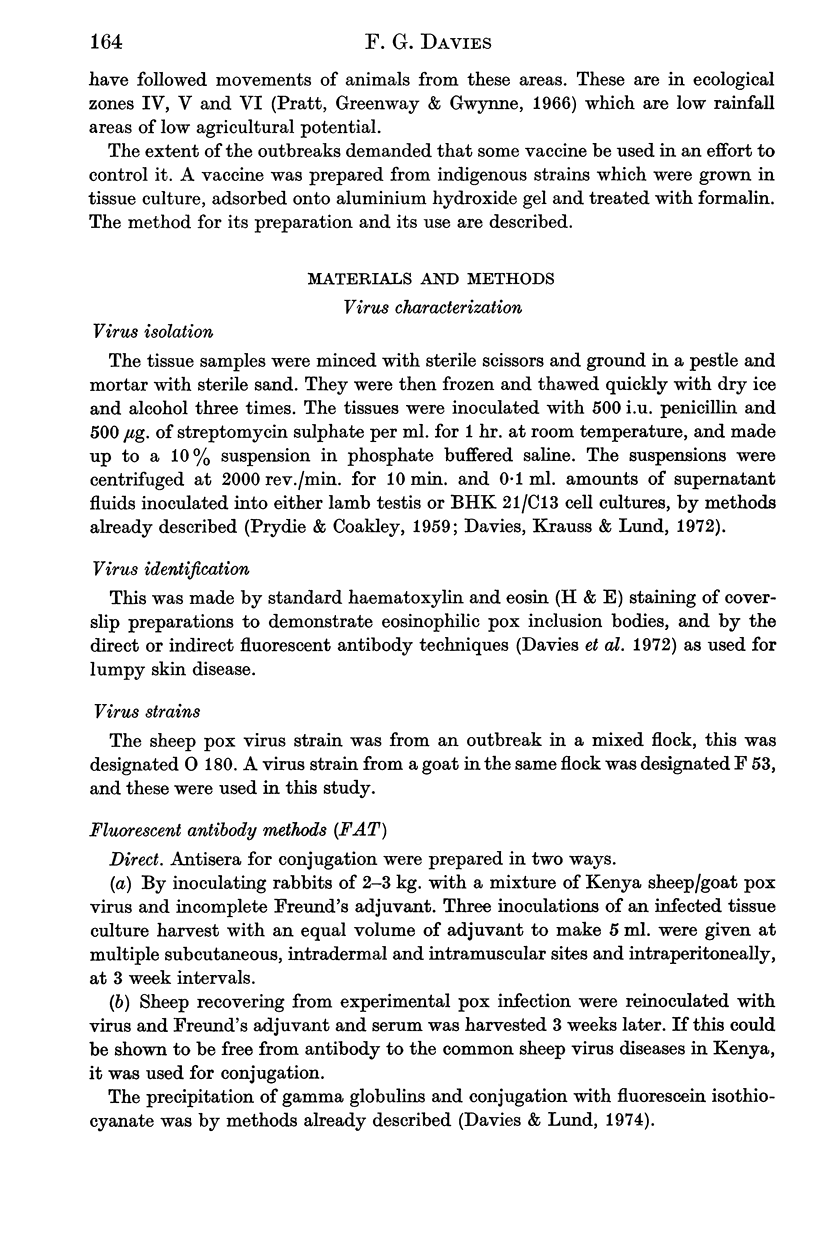
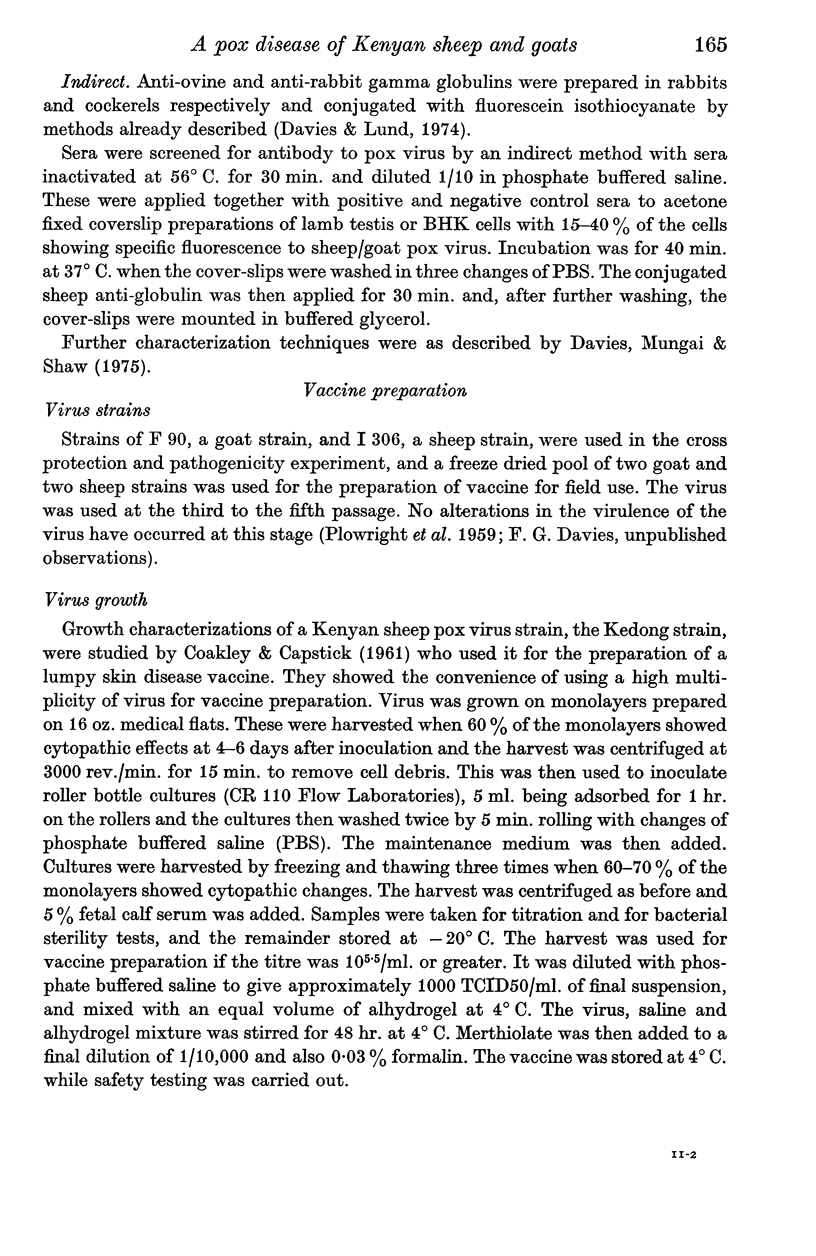
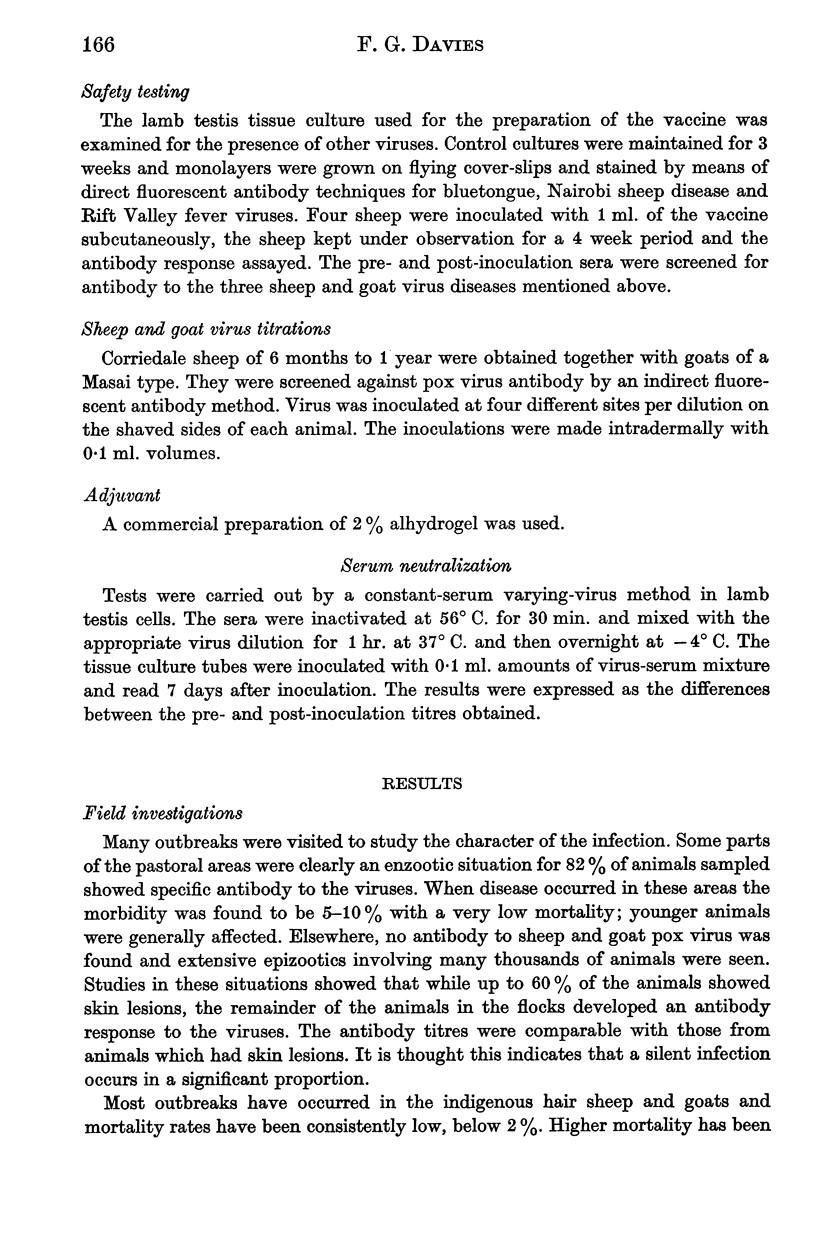
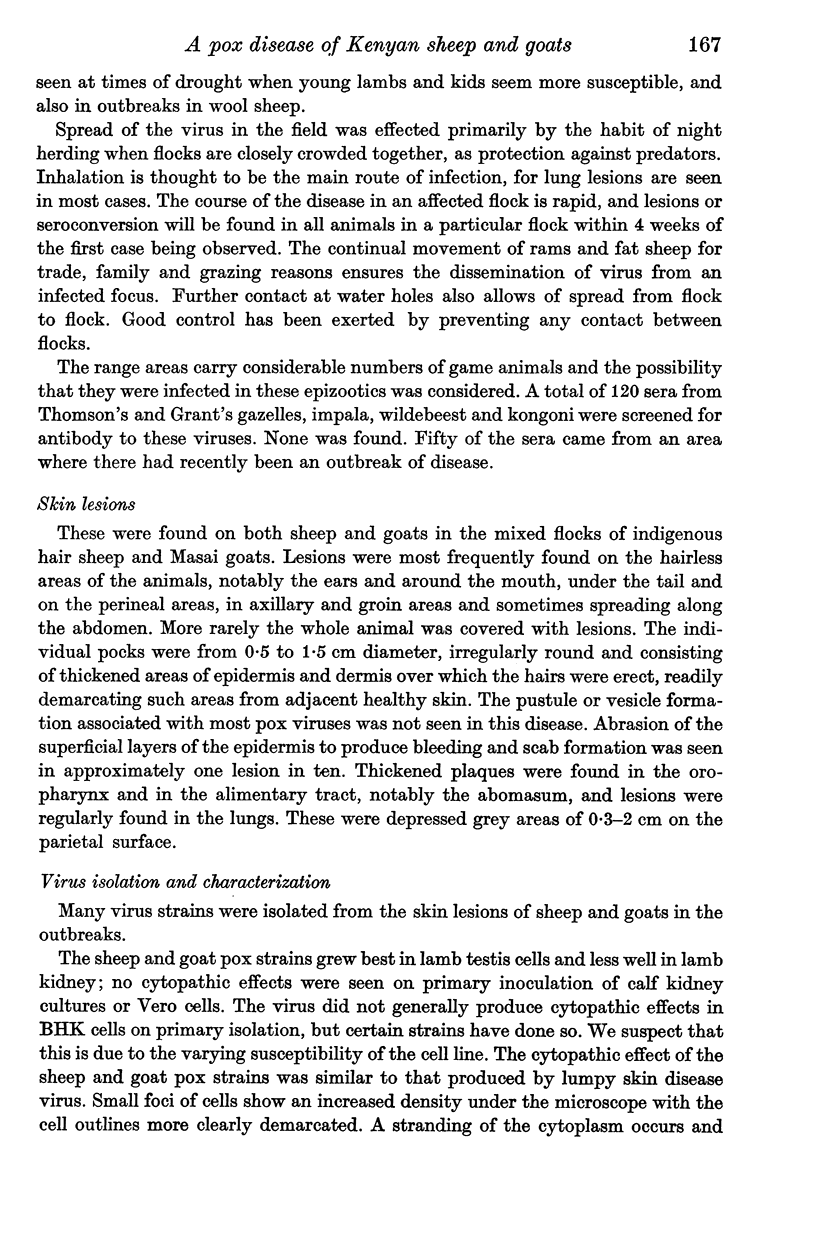
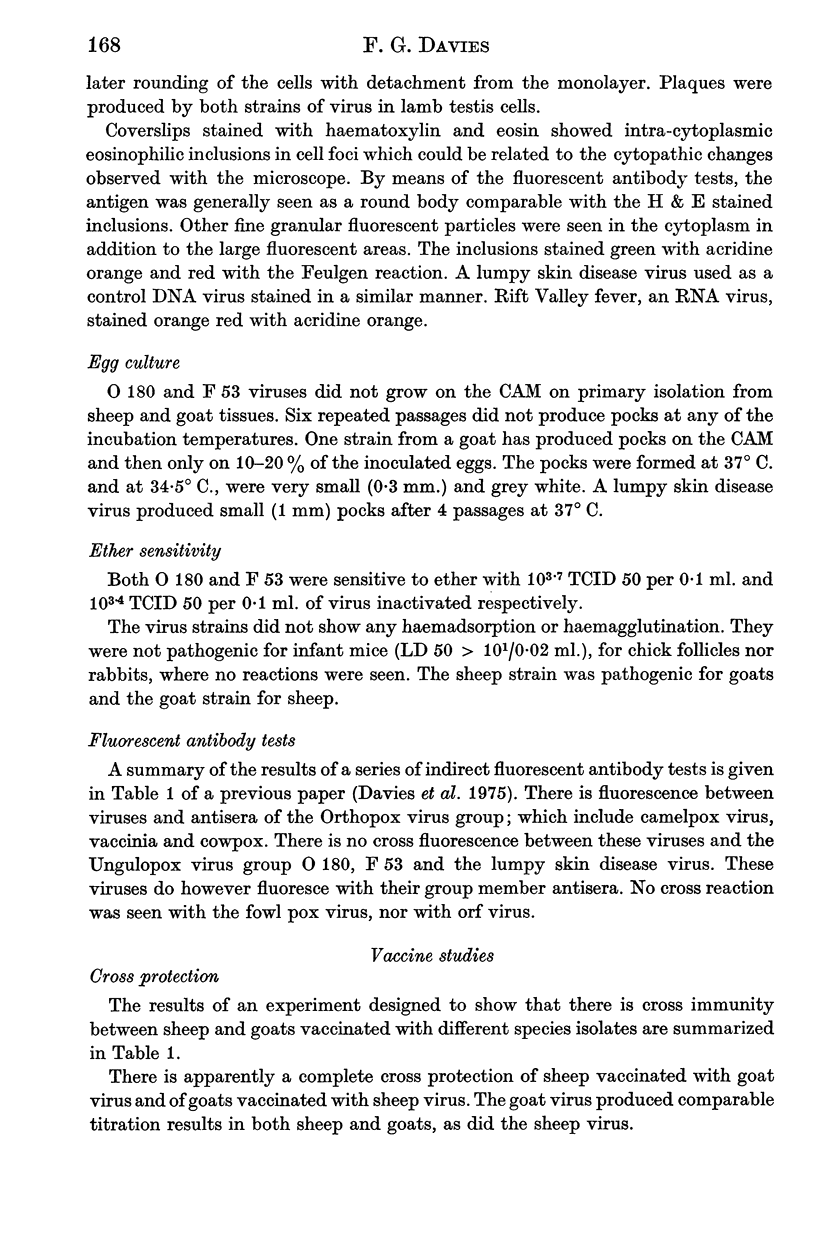
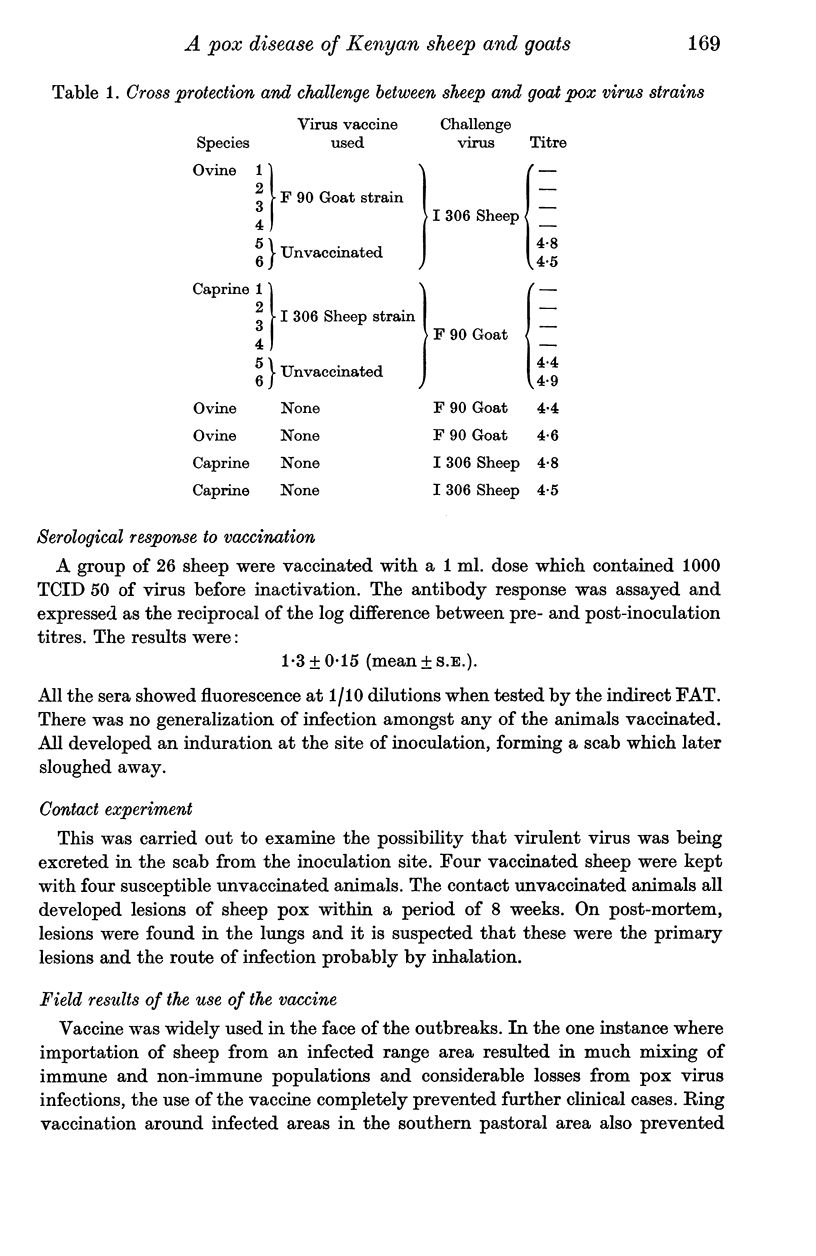
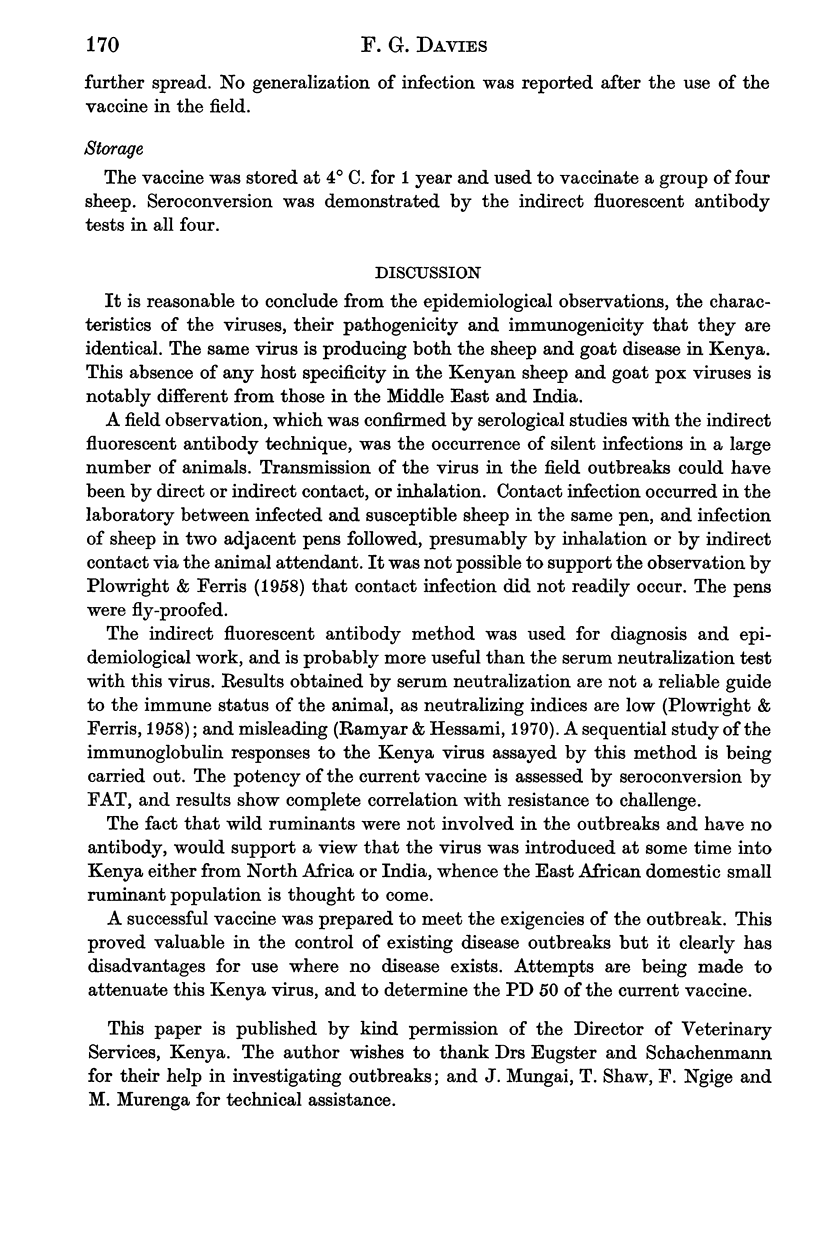

Selected References
These references are in PubMed. This may not be the complete list of references from this article.
- Davies F. G., Krauss H., Lund J., Taylor M. The laboratory diagnosis of lumpy skin disease. Res Vet Sci. 1971 Mar;12(2):123–127. [PubMed] [Google Scholar]
- Davies F. G., Lund L. J. The application of fluorescent antibody techniques to the virus of African horse sickness. Res Vet Sci. 1974 Jul;17(1):128–130. [PubMed] [Google Scholar]
- Davies F. G., Mungai J. N., Shaw T. Characteristics of a Kenyan camelpox virus. J Hyg (Lond) 1975 Dec;75(3):381–385. doi: 10.1017/s002217240002444x. [DOI] [PMC free article] [PubMed] [Google Scholar]
- Martin W. B., Ergin H., Köylü A. Tests in sheep of attenuated sheep pox vaccines. Res Vet Sci. 1973 Jan;14(1):53–61. [PubMed] [Google Scholar]
- PLOWRIGHT W., FERRIS R. D. The growth and cytopathogenicity of sheep-pox virus in tissue cultures. Br J Exp Pathol. 1958 Aug;39(4):424–435. [PMC free article] [PubMed] [Google Scholar]
- PLOWRIGHT W., MACLEOD W. G., FERRIS R. D. The pathogenesis of sheep pox in the skin of sheep. J Comp Pathol. 1959 Oct;69:400–413. doi: 10.1016/s0368-1742(59)80039-4. [DOI] [PubMed] [Google Scholar]
- RAFYI A., RAMYAR H. Goat pox in Iran; serial passage in goats and the developing egg, and relationship with sheep pox. J Comp Pathol. 1959 Apr;69(2):141–147. [PubMed] [Google Scholar]
- Ramyar H., Hessami M. Development of an attenuated live virus vaccine against sheep pox. Zentralbl Veterinarmed B. 1967 Oct;14(6):516–519. doi: 10.1111/j.1439-0450.1967.tb00052.x. [DOI] [PubMed] [Google Scholar]
- Ramyar H., Hessami M. Studies on the duration of immunity conferred by a live-modified sheep pox tissue culture virus vaccine. Zentralbl Veterinarmed B. 1970 Sep;17(8):869–874. doi: 10.1111/j.1439-0450.1970.tb01587.x. [DOI] [PubMed] [Google Scholar]


